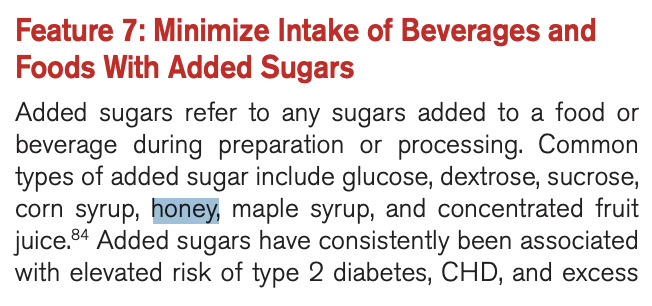AHA Dietary Guidelines (2021) classifies both honey and maple sugar as 'Added Sugars', something to be diligently avoided:

Dr Fuhrman discourages the use of maple syrup.
In The 10 Best and Worst Foods for Health and Longevity, Dr Fuhrman says:

In The Health Risks of Natural Sweeteners (2017), Dr Fuhrman asks,
In A Mature View on Sugar (2018), Dr Fuhrman discourages the excessive use of dates and dried fruits too:
Should we consume maple syrup and honey if we are following Dr Esselstyn's guidelines for reversal of heart disease? Excerpts from an interview with Dr Esselstyn (2013):
(5 mins) Transcript. Dr Greger compares 12 sweeteners: agave nectar, blackstrap molasses, brown rice syrup, corn syrup, date sugar, dark brown sugar, light brown sugar, maple syrup, honey, raw cane sugar, plain old sugar sugar, or turbinado sugar. In the end, he says that only two are healthy sweeteners: dates and blackstrap molasses.
Dr McDougall explains that maple syrup is to be avoided. At the same time, he says that a bit of maple syrup is okay if it increases our long term compliance of Whole Food Plant-Based guidelines.
In Sugar, Coated with Myths (2006), he explains:

In Pick a Category to Work on This Year (2009), he explains:
In Sugar: Adding Pleasure to the Satisfaction of Starches (2010), Dr McDougall says:
In the same article, in the end, he explains that a bit of maple syrup is okay if it increses our compliance of Whole Food Plant-Based guidelines:
If we search for Recipes with Maple Syrup, we see several recipes using Maple Syrup. For example, this one and this one.

 Instagram
Instagram YouTube
YouTube